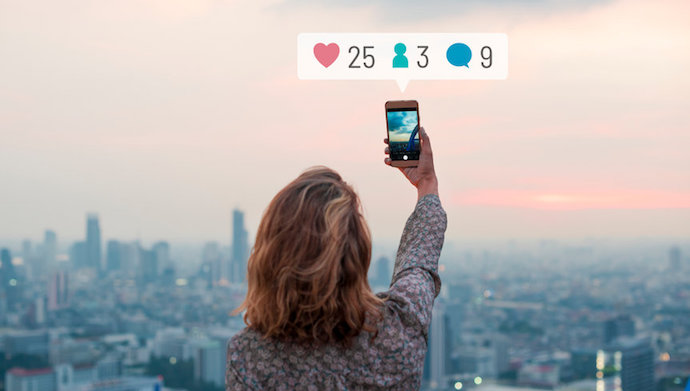
Social media marketing trends are a powerful tool for any business looking to make the most of digital marketing. Marketing, of course, starts with the trends that influence industries and consumers.
Understanding online Asian markets is an important part of many digital marketing campaigns for an important reason. By the end of 2020, an estimated 989 million people had access to the internet in China, followed by 696 million people in India.
Those two countries alone make up 36 per cent of the total number of internet users in the world. When the rest of the Asian market is added, it becomes even clearer why understanding trends in these regions is so beneficial.
Here, we delve into the three digital and social media marketing trends for small-to-medium-sized businesses in Asia looking to get ahead of the curve.
Advertising is shifting to data-driven targeting
Billboards are a traditional example of exposure marketing. They’re a fixed visual relying on a message being placed in a high traffic area to keep brands relevant in the public mind. But the internet is a virtual space, meaning consumers flow in and out in a less routine way.
This has encouraged a growing: targeted ads. Unlike exposure marketing, digital promotion with targeted ads looks to meet individual consumers exactly where they are.
Some consumers spend the majority of their time online on social media, where targeted ads come through programmes such as Facebook ads and Instagram business accounts. This type of marketing is most obvious on YouTube, where, because there is so much data around what people like to watch and engage with, advertising firms are tailoring their video ads to align with people’s interests.
Also Read: Here’s why startups need to approach digital marketing as applied data science
Luckily, this type of marketing doesn’t need an advertising agency or a heavy media budget to do well. There are many available courses on targeted ads and some get specific on the product being sold.
Authenticity is performing well as a call to action
As advertising budgets increase, and as targeted ads become more sophisticated in their design, consumers are facing overexposure to marketing efforts. Marketing overexposure tends to make consumers more sceptical of sales pitches and fatigued when it comes to engaging with brands.
As a result of this, consumers are now seeking out authentic engagement with brands. They want to follow businesses that produce things they like on social media, and most importantly, they don’t want to feel like this content is just being put out to make a sale.
Businesses making the most of Instagram have invested in utilising the platform’s broad scope of tools. Reels and Stories are being used to showcase the creation process for smaller businesses who rely on the unique qualities of their product as the selling point, from vegan health products to performance artists moving their art online in the absence of live events.
When people can see the authenticity that goes into creation, paired with a ‘soft-selling’ approach, they’re more likely to engage enthusiastically.
Paid sponsorships are growing in the influencer market
As successful as targeted ads are, they aren’t a catch-all tool. Some consumers prefer not to be marketed to while relaxing on YouTube or browsing Facebook, Instagram or Twitter – and that doesn’t even take into account access to ad blockers.
However, these are the places most consumers spend their time, so different ways of engaging with them on these platforms is important. Businesses are achieving this through paid sponsorships on the content consumers already love.
Also Read: Here’s why startups need to approach digital marketing as applied data science
The Asia-Pacific Influencer market was predicted to grow by 32.8 per cent between 2019 and 2025 – a projection made before the pandemic, which rapidly increased the number of online engagements. In the context of online business, influencers are people with strong online followings, whose content and personality make them trusted figures to their audiences.
Many influencers build their content around specific niches, from beauty, health and lifestyle to food, gaming and tourism. This makes paid influencer sponsorships particularly attractive when the influencer’s niche aligns with the business sponsoring them.
Influencers place a great emphasis on the trust they establish with their audience so they also act as gatekeepers in a way, giving consumers a level of comfort that the sponsorship deals they do take on offer worthwhile goods or services, or the brand is of genuine interest. Influencers often embed their sponsors’ ads into their content, making it entertaining for audiences and harder to skip – negating the limitations of targeted ads and building brand trust in the process.
Digital marketing is largely influenced by consumer-driven trends. Many of these trends overlap globally, but some are more strongly impacted by local consumer behaviours. Understanding them in both contexts, of course, is the key to catching the wave at the right time, especially when it comes to markets as large as Asia.
For businesses, this means marketing strategies should be built around data-driven targeting, leveraging paid sponsorships and offering an authentic call to action.
–
Editor’s note: e27 aims to foster thought leadership by publishing views from the community. Share your opinion by submitting an article, video, podcast or infographic
Join our e27 Telegram group, FB community or like the e27 Facebook page
Image Credit: rawpixel
The post The key digital marketing tips to help small businesses thrive appeared first on e27.

